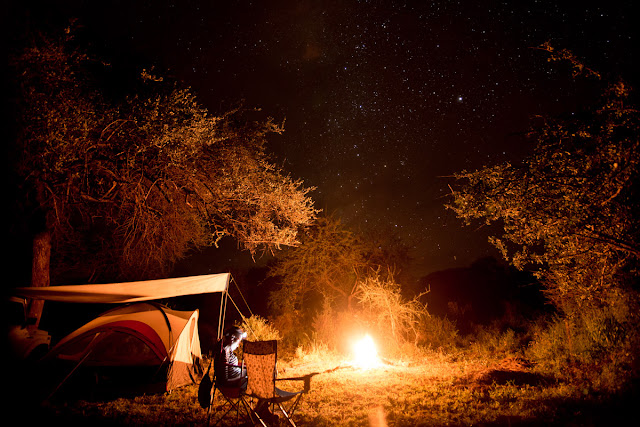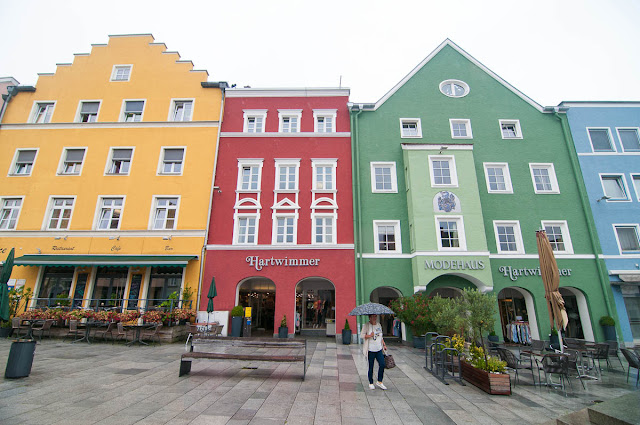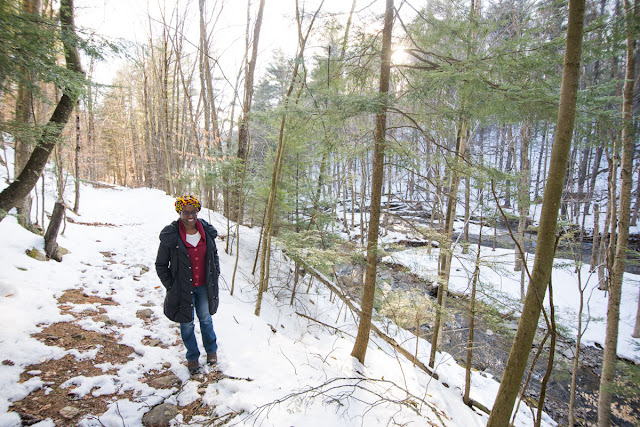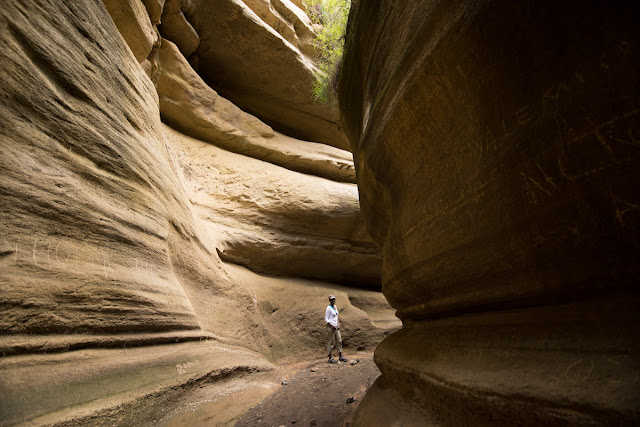Kenya: Angry Elephants in Meru National Park
The angry elephant stared at us, then trumpeted it's displeasure loudly. But wait! What are we doing here several hundred kilometers away from where you last left us enjoying the company of a herd of happy elephants?
Actually this trip happened some time after visiting Kimana. We had always wanted to see Meru National Park, and we thought that it would be a nice trip for our anniversary. This turned out to be our last trip before Corona hit, and it gave us lots of good memories. Meru Park is on the other side of Mt. Kenya so we drove up the side of the mountain, past Meru (where I was born, incidentally) and then down on the other side.
The drive turned out to be spectacular. You drive up higher and higher and the hills get steeper and steeper, and the views more and more lovely. Then back downhill till you get to the dry savannah that characterizes the northern part of Kenya.
A bit of excitement on the way when we heard a crazy buzzing from a cloud overhead - a swarm of locusts! These are grasshoppers that are normally happy to be alone that suddenly get the urge to have a party. And boy do they party: a swarm can be billions of locusts and they eat everything green when they land. I have no idea how many they were but extended as far as the eye can see and were moving at a steady inexorable pace - exactly like a cloud.
It's hard to see them in the picture, so I cropped a part of it and increased the contrast a bit and voila!
Finally we got to the park. The plus side of travelling so far is that as far as we could see we were the only people in the entire park, all 870km2 of it. Meru Park has a lot of unique wildlife, like the reticulated giraffe (my personal favorite variety of giraffe - it looks like a draftsman did the markings with a ruler and square).
The Kenya Wildlife Services (KWS) campsites are a bit of Russian roulette: you never know what you are going to get. In this case we scored: a beautiful spot with clean showers, running water, a sink and a swimming pool. Yes, I am not kidding on that last one - full on clean and operational swimming pool in the middle of nowhere. It was great.
The KWS guy showed up, chatted for a while then came back later with a huge load of firewood. He also mentioned that if we leave we should put our tent down because of baboons (!). Actually on the last day a herd(?) or is that a swarm(?) of baboons casually strolled through our campsite. Because we were there they didnt do anything but you could see their greedy little eyes checking out our food. By the way, I just checked it up, and they are called a 'troop.'
One of the highlights (and moments of excitement) was when we abruptly turned a corner and came across a herd of elephants crossing the river. They had a number of little ones and were pretty focused on their traverse. We stopped to watch.
Then the matriarch suddenly noticed us and turned toward us. She wasn't too far away - maybe 50 meters or so and sniffed the air in our general direction with her trunk. We froze and tried to be as quiet as possible. And then, all of a sudden, she let out a blast that sounded like a trumpet. I have never heard an elephant trumpet before and believe me it is really loud, and really scary.
We abruptly shifted into reverse and went back around the corner as she took a few steps towards us. Thankfully she stopped because it was a dirt road and, when it comes right down to it, she weighed several times what we did. And that's including the car. But after a few minutes they had crossed and we crept forward and watched them across the river, grateful that all we needed was a change of underwear (Sandi says 'Speak for yourself!'
The river in question is the Tana River, the longest river in Kenya. It flows from the Aberdares around Mt. Kenya and then through Meru Park. Eventually it empties out into the Indian Ocean.
Unusually for a Kenyan park, there are quite a few park benches and walkway areas where you can enjoy the flow. In fact, this was just a few meters from where we saw the elephants!
One of the interesting parts of the history of this park is the story of Joy Adamson. She was born in Austria, but eventually made her way to Kenya and married George Adamson, who was a botanist and Park Warden. One day he surprised a lioness who charged him and he shot and killed her. Later he discovered she had been protecting her cubs, so he brought them home and together they raised the cubs. Eventually one of them, Elsa, became the first lion ever to be raised in captivity who was released back into the wild (after careful training by the couple). She eventually wrote a book about her experience raising lions 'Born Free.'
From lions to dung beetles: this little guy was busy rolling a ball of dung. Dung beetles are part of the Scarab beetle family, and not to put too fine a point on it, they feed on dung. Apart from that, these are amazing little creatures. There are over 5,000 species of Scarab beetle (for comparison, there are 6,500 species of mammals on earth). They can roll a ball of dung 10x their weight. They bury these balls for later eating, thus fertilizing the soil. They can navigate by orienting themselves against the Milky Way, which is just so mind-blowing.
And thus we enjoyed our peaceful and warm night before our trip the next day to sub-zero temperatures....

















